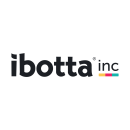There are 100 ways to cook an egg.
Boiled, scrambled, poached, baked, basted, fried, shirred, coddled, pickled — eggs shine on their own or as an ingredient in countless recipes.
Similarly, there are no limits to the variations of the hybrid work model, allowing companies to prepare the perfect balance of in-person and remote work, hand-prepared to support their unique culture.
THE FOUR MOST COMMON HYBRID WORK MODELS, ACCORDING TO CISCO
- Flexible hybrid
- Fixed hybrid
- Office-first hybrid
- Remote-first hybrid
Selecting the right hybrid model is crucial for whipping up maximum productivity and employee satisfaction. When implemented successfully, Gallup found that 9 in 10 remote-capable employees even prefer it over a fully remote setup.
For Colorado companies like Homebot and Ibotta, they’ve blended in-person collaboration with remote flexibility to create standout recipes that best suit their employees’ tastes.
Homebot connects people to make informed homeownership decisions together.
What does a hybrid work model mean at Homebot?
When it comes to a hybrid work model, there are two components at play: when and where.
Our core working hours are pretty flexible depending on the team and responsibilities. A few of us are partial to shifting a couple of hours earlier and have working agreements with our team to accommodate the preference.
Regarding location, we’re encouraged to work in the office at least one day a week for our companywide meeting. I mean, catered lunch and hanging out with co-workers? What’s not to like? Beyond that, it’s on the employee to decide where they’re working from, within the bounds of department expectations and security best practices. My co-workers have worked from home while traveling — even the odd ski chalet. We’re always excited to see our teammates living their lives and balancing it out well.
Why does this work well for employees?
I don’t think of it as a schedule as much as I do a culture of trust and flexibility. I know I can rely on my teammates to accomplish their tasks or reach out if they’re at risk and need additional support. Likewise, there’s an understanding that “where and when” aren’t quite as relevant as the “what” that impacts the organization and our customers.
My favorite aspect of our model is the flexibility. I never feel guilty when I need to make an appointment during work hours or shift my schedule to accommodate an out-of-work event. These things are part of all our lives, and I’m grateful to work for an organization that encourages a healthy work model. Selfishly, I enjoy accommodating my running training and traveling with my work in tow.
What are the key cultural or organizational ingredients that make this hybrid model work?
HOMEBOT’S CORE VALUES
Wooten attributes the success of the hybrid work model to two core values:
- “We Keep Our Eye On The Ball, Hand In The Dirt”
- “We Do All Of This Together, As A Team — And We Have Fun Doing It!”
We understand and share a common goal of seeing our customers and the organization succeed and grow, which extends into wanting to see each other succeed at personal and professional goals and enables us to succeed in a hybrid model. I’m excited to see my co-workers pursuing their personal goals, traveling and crushing life, as well as rocking it as employees. While I’m always excited to see people drop into the office, I’m equally chipper to see them jamming from wherever they may be.
Ibotta allows marketers to influence what people buy, and where and how often they shop.
Describe what a hybrid work model means at Ibotta.
It creates a good balance of remote and in-person work. We work remotely on Mondays and Fridays and come into the office Tuesday through Thursday. This means employees can ease into and out of your work week comfortably and have some in-person interaction to look forward to and break up their work week.
Why does this work well for employees?
Ibotta employees can have the best of both worlds. They can plan their focus time on days they work remotely, and plan their meetings and get-togethers when folks will be in the office. On Tuesdays, we have an all-company meeting and can interact with senior leaders and colleagues across functions. On Thursdays, we have product demos and bagels in the morning. Being in the office as a group leaves room for focused discussions, as well as “water cooler” chats that build a sense of community and camaraderie.
THE RECIPE FOR HYBRID SUCCESS
At Ibotta, it starts with these ingredients:
- Teamwork and Ownership: Creating a united culture creates an atmosphere that empowers employees to do their best work — together — wherever they’re located.
- Trust and Transparency: Being clear about what is expected from the bottom up and top down sets a companywide baseline, which provides value to the individual and the company.
- Flexibility and Incentive: Flexibility to take breaks or adjust a schedule is critical to long-term success, in addition to having perks and benefits that complement the model. Whether it be catered breakfast and lunch, fun in-office activities, paid parking or transportation, or bigger benefits like flexible time off, 30-day remote-from-anywhere or lifestyle spending stipends go a long way to provide job satisfaction.









